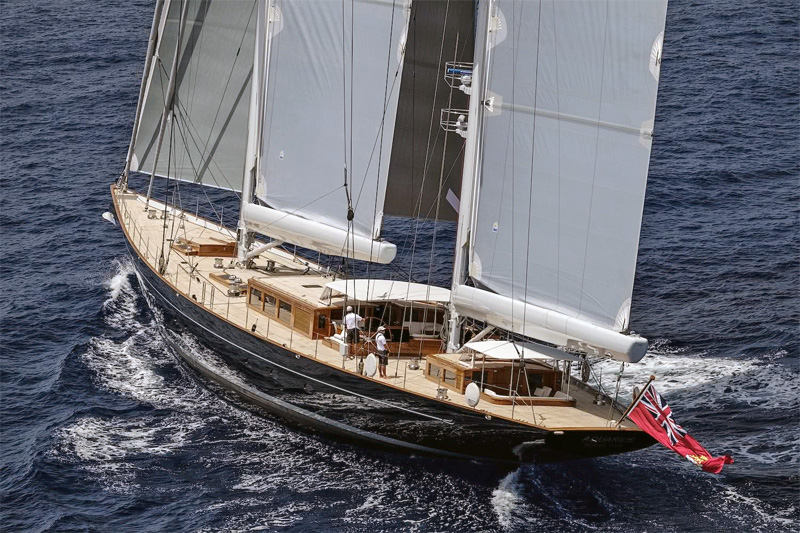What steering a superyacht can teach us
Grab the helm on a well-tuned 35-footer and you feel the slightest pull on the helm when steering in normal conditions and a bit of load as the boat heels in a puff until the mainsheet trimmer wakes up and puts the boat back on its feet. Add 100 feet to the boat and do the same thing, and you might have your arms ripped clean off. So, how do people steer these superyachts, and what can this teach us about the boats we own and sail?

Helm load
Helm load has several inputs, with boat size and displacement prominent but not necessarily dominant among them. Even an ILCA Class Dinghy (formerly Laser) helm loads up massively as the breeze comes up, so you struggle to keep the boat flat. In the case of an ILCA, that mostly has to do with helm balance. Extend a line down from the pintles (the rudder’s turning axis) and see how much rudder surface area is in front of that line. In the case of the ILCA rudder, no surface area is even close to the turning axis—an ILCA rudder is very unbalanced. Put some rudder surface in front of the turning axis and that surface will help you to turn the boat, rather than resisting your efforts to turn.
The roles of the rudder and tiller
Rudder shape plays a big role, with higher aspect rudders being generally less loaded. Eventually, though, a big enough boat is going to present a lot of load, no matter how balanced and efficient the rudder. The next time your boat is on the hard, turn the rudder and see how much area there is in front of the turning axis. The more balanced your rudder is, the less power you’ll need from the steering.
A tiller is just a lever that gives advantage in turning the rudder. Steering a J/105 with an Opti’s tiller would be impossible as you wouldn’t have the leverage you need to control the boat. The quadrant on a wheel steering system plays the same role as a tiller, and the bigger it gets the better the leverage it provides. Your typical 35-foot racer/cruiser would have an eight- or 10-inch radius quadrant. A 150-foot superyacht’s quadrant radius would typically be in the one meter range. This is the same leverage advantage as going from a four-foot tiller to a 16- or 17-foot-long tiller. Our typical 35-foot racer/cruiser would take a bit more than one turn of the wheel to go from hard over to hard over; while on the 150-footer it would generally be around eight turns from hard over to hard over.
How sail trim and tune fit in
Sail trim and tune still play huge roles in letting the helmsperson get the most out of the boat, and helm feel provides critical feedback for sail trim. A steering system with too much power can leave the helmsperson with little tactile feel for the rudder load and requires a bigger turn to give the desired steering input. This can give a vague and unresponsive feel to the steering. Many cruiser/racers are specified with steering at the more powerful end of things to accommodate less experienced owners who might not get things as balanced as a race team will, and for whom a highly responsive steering system might not be preferred.
If you find yourself looking for a more direct feel from the helm, decreasing the gearing in your steering with a larger sprocket in the pedestal (if it’s feasible) or a smaller quadrant could be the answer. Conversely, if you’re “turbo’ing” the boat with a square top main and giant “asyms,” you might find yourself looking for a bit more power out of your steering system.




